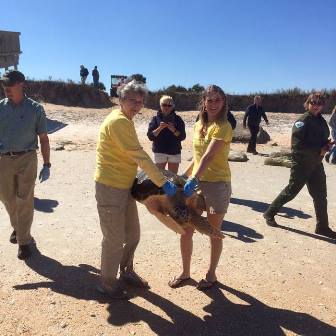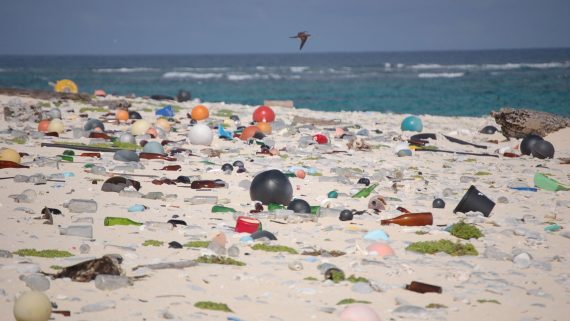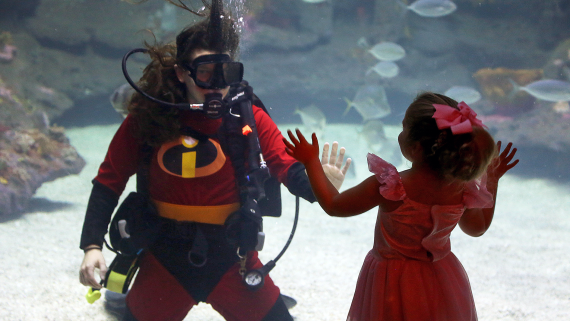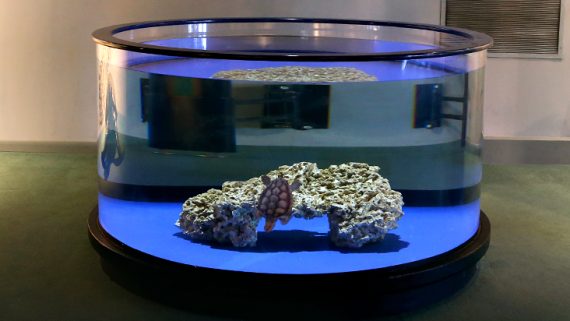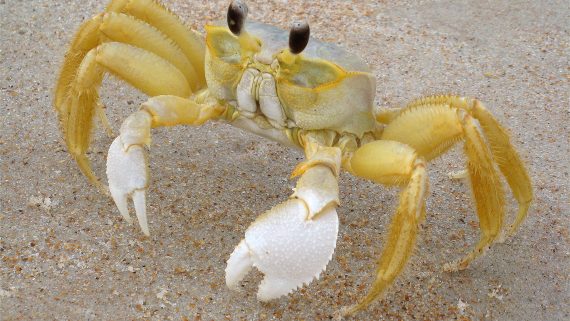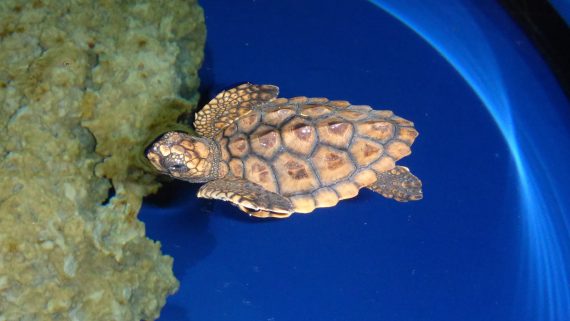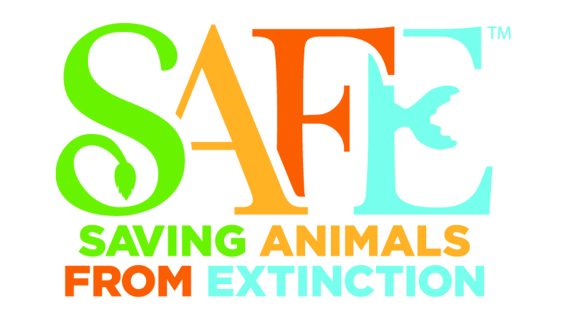Sea Turtle Rescuer
This week we have a special guest blog, an interview with a Sea Turtle Biologist who works at the South Carolina Aquarium in Charleston, South Carolina.
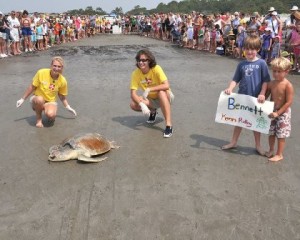
Willow, a sea turtle biologist, is pictured on the left helping with a sea turtle release of a Kemp’s ridley
Q: What do you do at the SC Aquarium?
My name is Willow Bender. I am a Sea Turtle Biologist at the South Carolina Aquarium and one of four core members of the Sea Turtle Rescue Program helping rehabilitate sick and injured sea turtles.
Q: What made you want to work with animals like sea turtles?
At a young age I had my first encounter with green sea turtles in Hawaii. This experience sparked my interest in these reptiles, and ever since I knew I wanted to work with them. This life-long passion has guided me to the South Carolina Aquarium, where I have the privilege to take care and treat these threatened and endangered species.
Q: How many sea turtles has the SC Aquarium rescued?
The aquarium has successfully rehabilitated and released 182 sea turtles in the past 15 years!
Q: What is the most common reasons why sea turtles end up at your facility’s hospital?
Sea turtles present at the hospital for an array of different reasons but there are a few species specific injuries or ailments we commonly see. Most of the reasons are unfortunately human related. Green sea turtles for example, usually suffer from GI [gastrointestinal] impaction due to the ingestion of marine debris, such as plastic. Loggerheads are usually afflicted with debilitated turtle syndrome (DTS). Although the initial causes of DTS are variable, the patients are usually minimally responsive, emaciated, covered in marine epibiota (barnacles), and have poor blood values. Kemp’s ridleys are notorious for stealing bait off fisherman’s hooks, and often times present with monofilament [fishing line] entanglement and embedded fishing hooks.
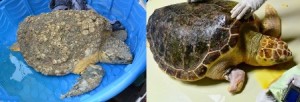
A before and after comparison of Belton, one the SC Aquarium’s current patients, who not only suffered from DTS but was also missing a portion of his right front flipper most likely from entanglement
Q: How long does it take the average sea turtle to get better?
Depending on why the patients are at the hospital, rehabilitation can be as little as two months (fishing hooks) or up to two years (boat strikes, DTS etc.), with an average stay of roughly six months.
Q: Do you release the sea turtles back into the ocean after they are rehabilitated?
Yes, we usually have local public beach releases where beachgoers and aquarium supporters can come and witness this amazing event.
Q: What is your favorite thing about your job?
My favorite part of my job is seeing the transformation of the patients from admission to release, and to be able to provide them medical and supportive care. You work with these animals on a daily basis, some for over a year. It is absolutely amazing to see them reach milestones in their rehabilitation process, such as swimming in a full tank of water and eating on their own.
Q: Do you have favorite sea turtle story?
My favorite sea turtle story, so far, would have to be caring for a 103 kg (227 lbs.) adult female loggerhead back in 2011. She epitomizes the resilience of sea turtles. McClellan, as she was named, was found entangled in a rope from a discarded crab trap just off South Carolina’s densest sea turtle nesting beach, Cape Romain National Wildlife Refuge. She also suffered from a boat strike wound on the caudal end [at the tail end] of her carapace, likely the result of being unable to dive due to the entanglement. The rope entanglement was so severe and prolonged that her right front flipper self-amputated during transport to the hospital. An ultrasound revealed McClellan was carrying shelled eggs, which she proceeded to lay in her tank one night! I was fortunate enough to be able to sit with her overnight and remove all 119 eggs from her tank as they were deposited and placed them in buckets of sand. The next day we relocated the egg clutch to a local nesting beach. Such a rewarding experience to work with this adult female, especially since she was able to overcome both human-caused injuries. After five months of treatment she was able to be released and is hopefully still thriving today!
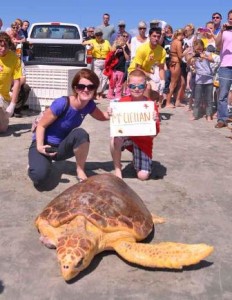
McClellan on her release day
If you’d like to learn about a sea turtle success story from the NC Aquarium at Fort Fisher, check out Womble’s Tale and share it with your class. This story also comes with its own lesson plan.
Our own loggerhead hatchlings are growing week by week. Turtle A now weighs 865 grams and measures 17.7 cm long and Turtle B now weighs 774 grams and measures 16.7 cm long. Use this data in our Hatchling to Yearling lesson plan. We will take a break next week from blogging for Spring Break and see you back in April!


